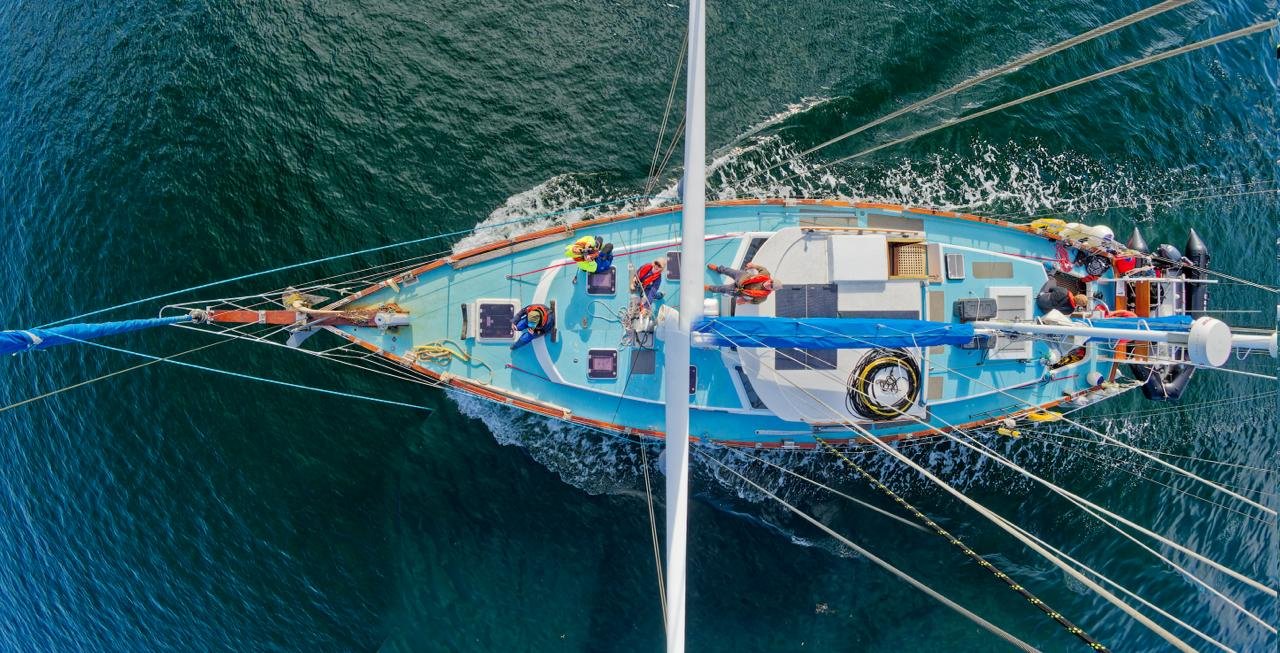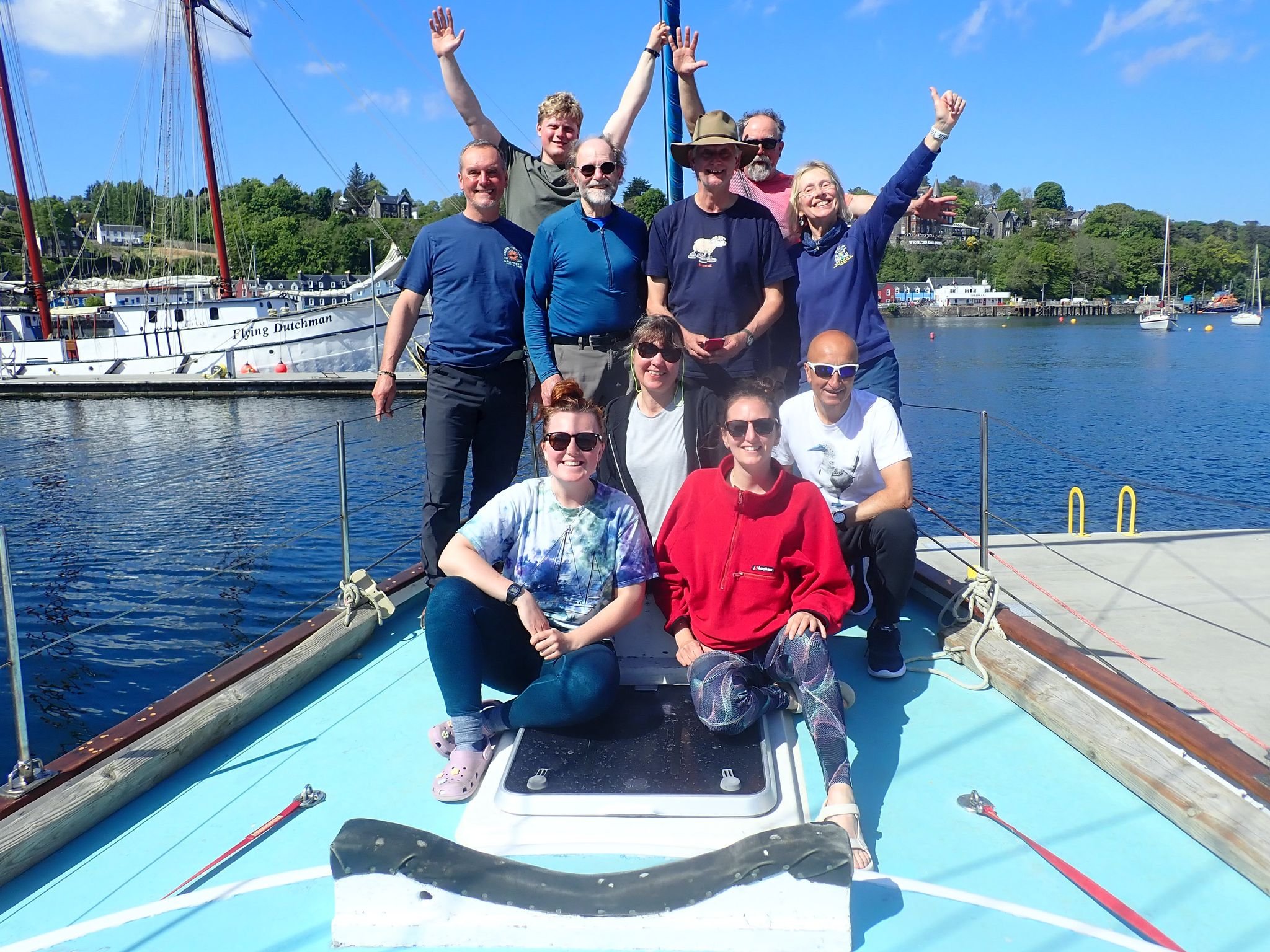Sunshine, still seas and so many epic wildlife encounters!
Fantastic weather allowed for far-flung surveying as our latest group of citizen scientists ventured to the Outer Hebrides aboard Silurian, HWDT’s dedicated research vessel. Over five days, the team onboard encountered six species of marine mammal and surveyed over 300km collecting vital visual and acoustic data. Read all about their experiences here…
Each field season, we set sail on research expeditions across Scotland’s west coast, inviting passionate individuals to join us in safeguarding marine life. By collecting vital data, these hands-on voyages are helping to deepen the understanding of species and drive real change to protect the whales, dolphins, and porpoises in Scotland’s seas.
From glassy seas to golden sunrises, our latest expedition aboard Silurian was packed with unforgettable moments. Settled weather allowed us to explore far flung places west of the Outer Hebrides where we encountered epic marine life. From bow-riding bottlenose dolphins, acrobatic common dolphins and many minke whales encountered coupled with flat seas and sunshine, this allowed for an unbelievably epic week of robust surveying.
We celebrated firsts for many of the expedition team; including rare bird sightings, an unexpected journey to offshore Atlantic waters beyond the UK Exclusive Economic Zone (EEZ) and the first time working at sea! Evenings consisted of swimming at remote anchorages, exploring remote shores of Mingulay and the Cairns of Coll and soaking up the very best of west coast weather.
Over five days, we recorded an impressive 116 marine mammal sightings across 300km of coastal and offshore waters, including areas that are underrepresented in current data sets. We encountered six species of marine mammal including: harbour porpoise, common dolphins, bottlenose dolphins and minke whales as well as grey and common seals. We also tallied rare seabirds such as great northern divers, great skuas and fulmars as well as spotting huge hurries of Manx shearwaters and gannets – a fantastic sign that food is present, and a good omen for the season ahead.
30 hours of acoustic and visual data was collected during the survey across important areas such as the Sea of Hebrides and west of the Outer Isles. Consistent presence of multiple species across dynamic bathymetric features such as Hawes Bank and the waters surrounding Hyskeir Lighthouse reinforces the importance of these habitats as biodiversity hotspots in Scottish waters.
During this expedition, west of Barra Head and Mingulay, we encountered a pod of bottlenose dolphins and photographs of their dorsal fins were taken for Photo Identification. HWDT has been tracking individual bottlenose dolphins in the Hebrides since 2001, using photographs of their distinct markings to identify them in a non-intrusive way. We have discovered there are two separate groups which live in the area all year round; an Inner Hebridean group of 35 animals, and a smaller group of 12 dolphins in the Barra Sound.
Using images taken during this survey, we’ll be looking for matches with our long standing photo-ID catalogue with exciting news soon to be shared!! By identifying individual dolphins in space and time, we can better understand habitat use and population dynamics along Scotland’s west coast. Crucially, it allows us to identify key areas that are vital for their survival, contributing to targeted conservation efforts and ensuring these incredible creatures are protected for generations to come.
Across five days of surveying, the expedition team surveyed over 300km, collecting 30 hours of acoustic and visual data. They encountered 116 marine mammal sightings across six different species.
A HUGE THANK YOU TO OUR TEAM OF CITIZEN SCIENTISTS WHO JOINED THIS EXPEDITION: JOHN, DEL, JANE, ANDY, IAN AND RUTH.























